Gordon G. Chang's Blog, page 6
April 19, 2016
South Korea, US Can’t Wait for Beijing to Approve Missile Defense
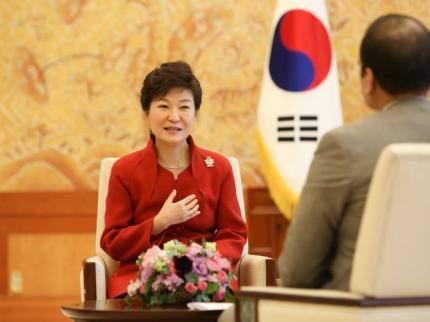
On Monday, a South Korean official implored Beijing to understand his government’s desire to deploy the Terminal High Altitude Area Defense system, THAAD as the missile-defense system is known.
“I hope to ask China’s understanding of what Korea is feeling about the North Korean threat,” said Shin Beomchul, director general for policy planning of the Foreign Ministry, to an audience in Washington, D.C. “It is not the usual threat, it is a nuclear threat. That’s very serious. We are now in the live-or-die situation.”
To deal with this existential nuclear threat, the occupant of the Blue House has attempted various approaches during her tenure. President Park Geun-hye began her term with the “trustpolitik” policy of building trust with Pyongyang. When that failed, she started to speak of a unified and democratic Korean state.
And, while traveling the road from engagement to unification, her approach and attitude toward China evolved as well. Initially, she worked with China with the hope that Beijing would rein in its North Korean ally. Not surprisingly, given Beijing’s adamant objections, she was reluctant to agree to deploy the US-made THAAD system.
Her China-centric approach took her to Beijing last September for the massive military parade that raised eyebrows across the region—and in Washington—as the head of democratic South Korea stood on the reviewing stand next to an assortment of autocrats and dictators.
To her credit, Park modified her approach when it became painfully evident that Beijing could not—or would not—control North Korea’s Kim Jong Un. Now, she is focused on defending the South Korean homeland by negotiating the deployment of the most sophisticated missile defense system her country can buy. And, once again, she looks like an ally of the United States.
The decision to deploy the THAAD missile system will likely be announced soon. Earlier this month in New York at a meeting at the Council on Foreign Relations, Defense Secretary Ashton Carter said “it’s going to happen,” referring to deployment in South Korea.
Nonetheless, as Shin’s overture indicates, Seoul would like to win China’s approval for THAAD. Likewise, the US has attempted to alleviate Beijing’s concerns by stressing the limited reach of the system’s tracking radar into China. Washington has offered repeatedly to brief China’s officials as well as discuss the system’s technical limitations. For its part, Beijing has refused meetings on the topic, as Mark Lambert, director of the Office of Korean Affairs of the State Department, said Monday.
As the North Korean regime becomes increasingly militarized, nuclearized, and hostile, however, China can hold back the deployment only for so long. Now, for the first time, the American and the South Korean leadership is on the same page with regard to regional missile defense. Therefore, the deployment of THAAD seems inevitable—and not a day too soon.
“We need to defend our own people, we need to defend our own allies, and we are going to do that,” Carter declared this month. And Shin this week agreed, saying that protecting South Korea was his government’s “top priority.”
China has had a veto on the matter for too long and now Americans and South Koreans are approaching the point when they will no longer ask for Beijing’s permission to defend themselves—from a regime China has helped arm.
OG Image: Asia PacificKoreaChinaSouth KoreaNorth Korea
Asia PacificKoreaChinaSouth KoreaNorth Korea
April 14, 2016
China Takes Custody of Taiwan Nationals in Kenya

On Tuesday, Beijing took custody of 37 Taiwan nationals in Kenya and flew them to China. This followed China’s taking of eight other Taiwan citizens from that country on Saturday.
Nairobi said the 45 were "deported," but Minister Hsia Li-yan of Taiwan’s Mainland Affairs Council used the term “rude and savage.” “Savage” may be a bit of an exaggeration, but the apprehension of the individuals, who arrived in China in hoods and handcuffs, appears to have been an “extrajudicial abduction,” as Taipei first termed it. In any event, the incident undercuts the spirit of cooperation embodied in the 2009 Cross-Strait Joint Crime-Fighting and Judicial Mutual Assistance Agreement.
Beijing believes the 45 Taiwan nationals were involved in a massive Kenya-based phone scam that, according to Beijing, stole “tens of billions of yuan”from Chinese citizens in China.
The problem for Beijing is that many of the suspects, prior to their "deportation," were acquitted in a Kenyan court. Beijing has said it will retry the Taiwan detainees who had been found not guilty.
Some commentators believe Beijing’s extraordinary move is part of a campaign to put pressure on Tsai Ing-wen, who on May 20 becomes Taiwan’s president. Tsai was swept into office in January elections that rejected the China-friendly Kuomintang. Not only did the KMT, as the ruling party is known, fail to hold the presidency, but for the first time it lost control of the Legislative Yuan, the national legislature.
Tsai’s Democratic Progressive Party rejects the notion that Taiwan is part of “China,” the position taken by both the KMT and the Communist Party of China. And Beijing is clearly worried that Tsai will push the island republic even further from China’s orbit. Chinese officials have been trying, so far without success, to get Tsai to accept the “1992 Consensus,” a loose agreement between Beijing and Taipei that Taiwan and the so-called “Mainland” are both part of the same country.
The Chinese tactic will probably fail as Kenya's 'extradition' of Taiwan citizens to Beijing is already provoking indignation and diminishing support of Beijing in Taiwan. In a somewhat similar case, Beijing’s surreptitious seizures of two Hong Kong booksellers—one from Thailand and one from Hong Kong—triggered anger, panic, and intense criticism of Beijing that has crippled China’s standing in the city.
China’s actions have a chilling edge. In practice and as a matter of law, Beijing often does not recognize the foreign nationality of those born in what it considers to be “China.” Therefore, it frequently has denied consular protection to Australians, Americans, and others who have surrendered their Chinese nationality and taken foreign passports. In the Hong Kong bookseller’s case, China went further, having evidently pressured one of the abducted individuals to give up his UK passport so that Beijing would not have to deal with London over the blatantly illegal seizure.
And it now looks like Washington’s turn to feel the heat. It has been reported that one of those extradited from Kenya may be a US citizen.
China’s Global Times, which is controlled by the authoritative People’s Daily, says the fierce criticism in Taiwan against the Kenya seizures is partisan, “pro-Green,” a reference to supporters of Taiwan identity and self-governance. But the outrage in Taiwan is clearly evident across the political spectrum, from Greens to the still-“Blue” government.
Beijing now has custody of 45 of Taiwan’s nationals, but by taking them it surely will lose the remaining 23 million.
OG Image: Asia PacificChinaTaiwanKenya
Asia PacificChinaTaiwanKenya
April 5, 2016
Did Trigger-Happy North Korea Take a Shot at China?
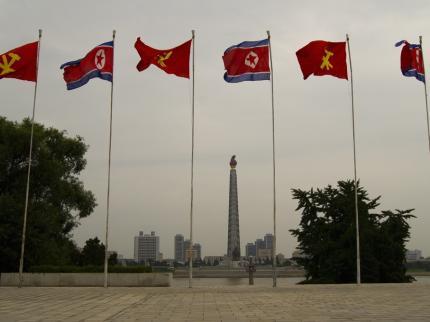
On March 29, North Korea launched a projectile from a location near the port city of Wonsan. The ballistic missile or artillery shell traveled about 125 miles on a northeast path, in other words, toward China, landing near the border.
South Korean Defense Ministry analysts speculate that the North originally planned to fire the projectile out to sea but changed plans and pointed it inland instead due to last-minute problems. That seems highly unlikely, however, because if there were indeed problems they would not risk firing into China.
The NightWatch site maintains that the trajectory was intentional as well as “unprecedented.” In all probability, the North Koreans meant to send a hostile message to Beijing.
Relations between the People’s Republic of China and the Democratic People’s Republic of Korea seem to deteriorate by the week. They are each other’s only treaty ally, but in recent years ties have evidently eroded. Now, the bilateral relationship has become, in my view, the most fascinating one in the world to watch.
There are those who believe that Beijing and Pyongyang are actually staging a drama for the benefit of outside observers, engaging in “kabuki,” in other words, maintaining an elaborate deception and denial campaign. That could have been true in the early part of last decade, especially during the first and middle stages of the Six-Party “denuclearization” talks, which began in 2003.
At this moment, however, the tension between the two states seems real. Both regimes are in turmoil, each led by a leader unable to consolidate his position after formally taking power. From all indications, the two capitals seldom talk to each other.
Why the problems? China and Korea have had a strained relationship for centuries, with their borders moving hundreds of miles in both directions.
Still, ties were good when both Mao Zedong and Kim Il Sung, the founders of the two states, were alive and in charge. They had much in common—both were Chinese-speaking and members of China’s Communist Party, for instance—and so both China and North Korea cooperated and supported the other. Indeed, during the Korean War, Mao sacrificed perhaps 900,000 soldiers, including his eldest son, to keep Kim in power.
Since the passing of the two larger-than-life figures, however, subsequent leaders have failed to maintain a close personal relationship and have often found themselves at odds on fundamental policy issues. And as each regime envisioned different futures, relations have, over time, deteriorated.
Moreover, other factors have driven the two states apart. The December 2013 execution of Jang Song Thaek, a senior North Korean official married to Kim’s aunt, and the subsequent destruction of his nationwide patronage network, for instance, had the effect of severely disrupting ties between the North and Beijing because Jang and his underlings had managed most of the communications between the two capitals.
Communication among civilian officials do not seem to have recovered since. In addition to the breakdown in civilian ties, it seems that military communications and collaboration links are deteriorating as well. China has reduced purchases of North Korean commodities from the Korean People’s Army. Kim Jong Un, the current ruler in Pyongyang, has taken responsibility for some commodity sales from the military. And, to top it off, young Kim has been purging his officers who have had ties to China, counted among the unfortunates is General Pyon In Son who was executed.
Of course, one can never be sure when dealing with China and North Korea. Yet when one state fires a projectile toward the other, we know we are seeing world-class acting or, more probably, a dramatic worsening of ties. Regardless, no possible end game suggests stability on the horizon.
OG Image: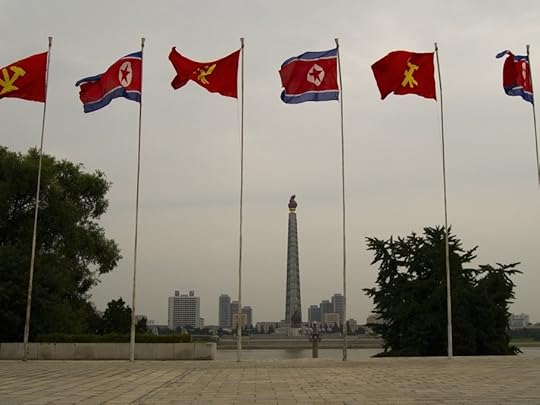 Asia PacificKoreaChinaNorth Korea
Asia PacificKoreaChinaNorth Korea
April 1, 2016
China's Show of Force in Indonesian Waters
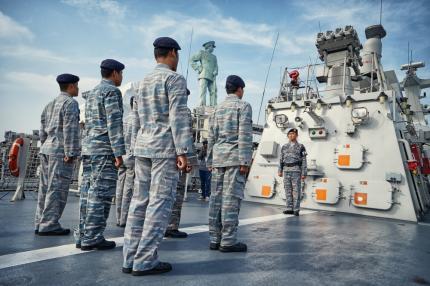
China has called on Indonesia to release eight crew members from a fishing boat that was seized in mid-March. The tense standoff could be the result of a new phase of lawlessness in China’s behavior in the South China Sea.
On the 19th, a Chinese coast guard vessel entered the sovereign waters of Indonesia off one of the Natuna Islands. Just 2.7 miles from shore, the Chinese vessel rammed a Chinese fishing boat, the Kway Fey, to free it as it was being towed by an Indonesian craft. Indonesia had just seized the Kway Fey for illegally fishing in Indonesia’s exclusive economic zone.
China’s embassy in Jakarta claimed the Chinese craft was in a “traditional Chinese fishing ground,” but there is no such concept either in the U.N. Convention on the Law of the Sea, which Beijing has ratified, or customary international law.
Beijing’s infamous “nine-dash line” draws a sweeping arc across official maps, suggesting Beijing claims about four-fifths of the South China Sea. Indeed, no other nation in the world recognizes the sea boundaries China claims, and all nations bordering that body of water dispute them.
What is notable about the incident last month, however, is not that Chinese fishing craft are exploiting other countries’ territorial waters—they have been doing so for years—but that Beijing has just provoked Indonesia, a country described as China’s “only friend in the South China Sea.”
President Xi Jinping has calculated that it’s to China’s advantage to relentlessly pressure its neighbors—friends and foes alike. Some see this as a strategic folly because, until now, China’s aggressiveness has achieved little more than to rally and unite its neighbors against it.
Indeed, Xi’s foreign policy appears increasingly erratic and ad hoc, with tactics that seem driven more by impulse than a coherent strategy, as observed in a Wall Street Journal report last June.
This apparent “incoherence” comes at the same time Beijing is experiencing mounting economic and political pressures at home. It is difficult for outsiders to know if or how China’s foreign policy provocations and its unsettling domestic problems are connected. Still, for the foreseeable future, it would be wise to anticipate the likelihood that China’s foreign policy will be less predictable, and less benign.
OG Image: Asia PacificChinaIndonesiaXi JinpingSouth China SeaSouth China Sea Disputes
Asia PacificChinaIndonesiaXi JinpingSouth China SeaSouth China Sea Disputes
March 22, 2016
China’s 2016 Military Budget Up Only 7.6%
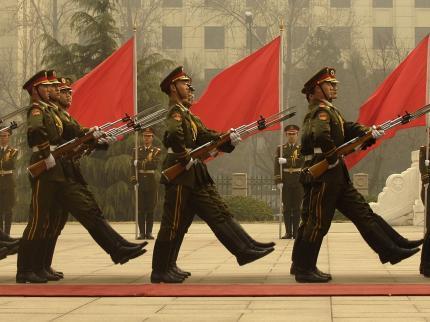
The biggest surprise to emerge from the highly scripted National People’s Congress annual meeting, which concluded last week in Beijing, was the announcement that the country’s military budget would increase a mere 7.6 percent this year. The figure is well below last year’s announced 10.1 percent jump and is the first single-digit rise since 2010, when the generals and admirals had to live with 7.5 percent.
Undoubtedly, the publicly announced budget does not include all military expenditures, but the percentage change is generally thought to indicate the spending trend line for the People’s Liberation Army.
Some analysts believe the relatively smaller increase for the world’s largest military means China’s newish leader is showing the flag officers who’s boss. “Military figures and analysts said the ‘surprisingly low’ budget increase indicated President Xi Jinping was not scared of offending senior military officials and was demonstrating his ability to control the army through economic means,” wrote Hong Kong’s South China Morning Post.
That analysis fits the narrative that Xi has full control of the military’s top brass—a view that took hold even before Xi’s September announcement of what appears to be the most sweeping top-to-bottom reorganization of the military of the People’s Republic.
Although there may be some truth to that analysis, the larger issue and reality cannot be overlooked: Xi has favored and will continue to favor the generals and admirals because he needs their political support and he needs them to execute his provocative foreign policies, especially in the peripheral seas. In my view, it’s unlikely that the decline in the budget’s rate of growth suggests tension or a rift between between Xi and his flag officers.
A more likely explanation is that the Chinese central government did not have the resources for more. Beijing’s ambitions have been expanding in all directions in the last decade, and Xi has made massive and multiple commitments in and outside China during his rule. And, he is considering extravagant new commitments like the trillion dollar “One Belt, One Road” initiative, which contemplates building infrastructure in two broad arcs—one over land and the other over sea—linking his country to Europe. At the same time, the Chinese people are demanding more from the communist party, from cleaner air to better schools to enhanced social services.
Today, the reality is that China’s economy is faltering and declining growth precludes the lavish spending that was possible when the economy was roaring ahead. In 2010, the economy reportedly grew 10.4 percent and probably expanded even faster. In the years since, military budget increases have far outstripped economic growth, something especially evident in 2014.
Last year, the National Bureau of Statistics reported that China’s growth rate slipped to 6.9 percent—a number that almost certainly overstates the real rate by a wide margin.
Now, there are choices to be made.
So why did Xi Jinping decide on only a 7.6 percent increase for his friends in the officer corps? Perhaps it is all he could afford.
OG Image: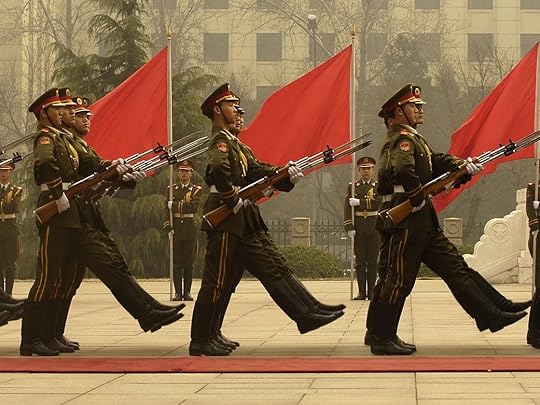 Asia PacificChinaMilitary
Asia PacificChinaMilitary
March 15, 2016
Missile Defense in the Era of Kim Jong Un

“Our hydrogen bomb is much bigger than the one developed by the Soviet Union,” reported the state-run DPRK Today on Sunday. “If this H-bomb were to be mounted on an intercontinental ballistic missile and fall on Manhattan in New York City, all the people there would be killed immediately and the city would burn down to ashes.”
North Korea’s threat followed its release on Wednesday of pictures showing Kim Jong Un standing next to what was reported to be a nuclear warhead. Although the object—a shiny sphere that has been compared to a 1970s disco ball—was most likely a mock-up of a weapon in development, it is probably just a matter of years before his technicians build a real one.
Kim is surely loath to launch nukes, but it would be unwise not to be concerned by his incendiary threats, especially because they come at the same time as intense infighting, highlighted by the execution and disappearance of flag officers. Once again, something is amiss in Pyongyang, and in times of turmoil dictators like Kim have incentives to act rashly.
All of which brings us to the subject of deterrence. If it fails, as it might, no country has a good Plan B.
On Thursday, Admiral William Gortney, commander of the US Northern Command and NORAD chief, told the Senate Armed Services Committee that North Korean missiles can “range the continental United States and Canada.”
There are two missiles Pyongyang can use to put a hole in North America. There’s the Taepodong-2, the military version of the Unha-3 that was tested on February 7, and the shorter-range but far more fearsome KN-08.
The Taepodong takes time to assemble and fuel, and the American military can destroy this launcher on the pad with nothing more sophisticated than an airstrike.
The KN-08, however, is carried on a Chinese-built mobile launcher. It can hide and shoot, so NORAD will, in all probability, know that it has been launched only when sensors pick it up in flight. Therefore, America needs a missile defense system.
At the moment, the US is putting 40 missile interceptors in Fort Greely in Alaska and four more at Vandenberg Air Force Base in California. The task should be completed, Gortney said, by the end of 2017.
Gortney also said his missile defense system can handle any North Korean or Iranian attack, but even defenders of missile defense recognize one shortcoming of the concept. “One interceptor versus one warhead in mid-course is a failing proposition because they can produce more than we can ever possibly afford to put into the ground,” the admiral testified Thursday.
Gortney in his oral testimony referred to “very promising” work on lasers and a “multiple-object kill vehicle,” but military analysts know in the end offense almost always beats defense. America, however, has little choice but to keep working on expensive missile defenses because even one fewer warhead getting through is a victory of sorts.
Until US planners can be sure they can rely on deterrence—and with regard to North Korea that may be never—they will need to be able to destroy missiles arching toward America or its friends and allies.
Photo Credit: Korean Central News Agency (North Korea)
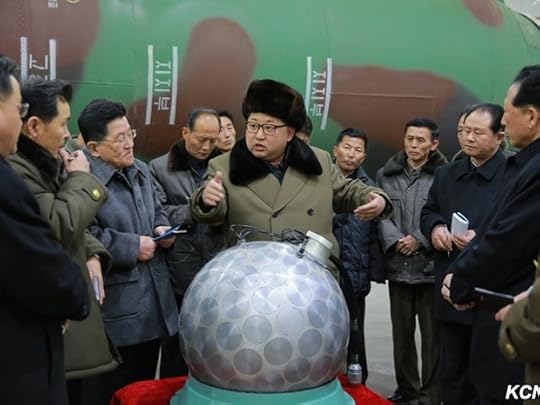 Asia PacificNorth AmericaUNAsiaKoreaAsia PacificNorth KoreaUNKim Jong Un
Asia PacificNorth AmericaUNAsiaKoreaAsia PacificNorth KoreaUNKim Jong Un
March 9, 2016
China's Capacity to Project Power Is Going Global
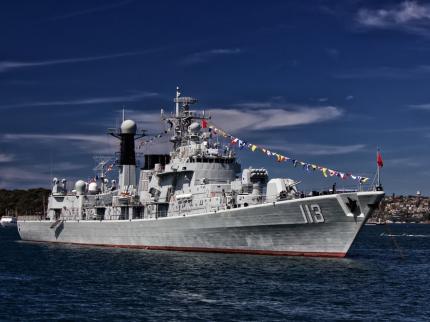
Tuesday, Chinese Foreign Minister Wang Yi said that China is looking to build “some infrastructure facilities and support abilities,” Beijing’s code for military bases, outside China. “I believe that this is not only fair and reasonable but also accords with international practice,” he said.
If Wang sounded defensive, it is because for decades China adamantly insisted it would never maintain such bases outside its borders.
At the moment, however, the Chinese navy is building “support facilities” in Obock in Djibouti, on the Horn of Africa, which guards the southern entrance to the strategically important Red Sea. The location is generally considered, inside China and elsewhere, as the first of the country’s foreign military bases.
More are on the way as China develops port projects around the Indian Ocean. Take the Chinese-funded Colombo International Container Terminal, for instance. In both September and October 2014, the Sri Lankan government allowed a Chinese submarine and its tender to dock there, which shocked and angered New Delhi.
China is big in the Indian Ocean. It is now constructing facilities in Payra in Bangladesh, Gwadar in Pakistan, and Kyaukpyu in Burma. There is a Chinese-funded port in Seychelles with military applications.
In November 2014, quoting a report in Chinese media, the Namibian noted that China was establishing 18 “naval bases” in the Indian Ocean. The People’s Liberation Army responded by disavowing the Chinese report and said the claims made in the articles were “utterly groundless.”
Whether the report is accurate or not, China is unmistakably developing a support infrastructure in the Indian Ocean – and beyond -- for its expanding fleet of warships. Beijing last year was in talks with the Namibian government to build a base for up to six warships at Walvis Bay. A “depot” or “overseas strategic support base” there would give the Chinese navy the ability to interdict shipping rounding the Cape of Good Hope.
Beijing, however, is not content with just the South Atlantic. Farther north, near the equator in the Gulf of Guinea, China is constructing an $800 million port in Sao Tome and Principe, another project with military implications.
China is even casting its glance toward the North Atlantic. In Portugal’s strategic Azores, Beijing has shown an interest in taking over what is becoming a “ghost” U.S. Air Force base, Lajes Field, on the island of Terceira.
At the moment, there are only 200 American personnel at the facility. Pentagon budget cuts are aggravating the economic downturn in the area and that may oblige Lisbon to allow China’s military to use Lajes.
Chinese planes sitting at the end of the 10,865-foot runway there could be at the mouth of the Mediterranean in minutes—and would be closer to New York than Hawaii is to Los Angeles. According to locals, China is also expressing an interest in the port near Lajes as well.
Earlier this week Foreign Minister Wang was coy about his government’s intentions, but Beijing’s global vision is coming into focus. China is extending its capacity to project power to Europe and the Mediterranean Sea, and indeed, even closer to America’s shores.
OG Image: Asia PacificChinaMilitary
Asia PacificChinaMilitary
March 1, 2016
As Trade Tumbles, China and Russia Inaugurate New Rail Line

On Saturday, China inaugurated a “new freight route” to Russia as a train left Harbin, the capital of northeastern Heilongjiang province, for Yekaterinburg in Russia, 5,889 kilometers away.
The new route will slice 30 days off the previous 40-day journey by land and sea.
Chinese and Russian media celebrated the departure of 47 containers carrying $1.46 million of bicycle parts and other light industrial products, mostly manufactured in southern China.
Beijing and Moscow are trying to keep up appearances, missing no opportunity to publicize economic ties. Many aspects of the relationship between the two capitals are blossoming, but trade is not one of them.
Last year, bilateral commerce between the two giants amounted to a miniscule $64.2 billion, down 27.8 percent from 2014 according to China Customs.
The falloff is stunning and seems to have occurred in the second half of last year. At the end of April, Li Hui, China’s ambassador to Moscow, said that Beijing intended to increase bilateral trade to $100 billion in 2015.
The accelerating decline must be disturbing in both the Kremlin and Zhongnanhai. China and Russia are now even further away from reaching their announced a target of $200 billion in bilateral trade by 2020.
Why is commerce between the two large economies falling? For one thing, the Russian economy is contracting, declining 3.7 percent last year according to the Russian Federal Statistics Service. In all probability, the drop was even larger.
China’s National Bureau of Statistics reported the Chinese economy grew 6.9 percent last year, but that is also likely to be wrong. There is a consensus forming that growth was about 4 percent, and there are even suggestions it was more like 1 percent.
Whatever the truth about these two economies, they are clearly ailing, with most indicators moving in the wrong direction.
Beijing, therefore, finds itself on uncomfortable ground, having to defend itself in front of a Russian audience. As the official China Daily noted early last month, Zhang Di, economic and commercial minister at the Chinese embassy in Moscow, “refuted allegations that it was the slowdown of the Chinese economy that somehow caused difficulties in the Russian economy.”
Zhang characterized the current downturn in trade as merely a “temporary phenomenon,” denied that economic cooperation between the two countries had “sunk,” and contended that “trade between China and Russia should be assessed comprehensively, not simply by a change in volume.”
The message is that the China-Russia “strategic partnership” is here to stay, despite what may happen to trade in any one year. And indeed, diplomatic and other ties seem to be strengthening recently, as the Chinese and Russian publicity surrounding the Harbin-Yekaterinburg train indicates.
In fact, these ties might tighten as both economies weaken. In this case, leaders in both Moscow and Beijing could decide they need each other more in today’s leaner times than before.
After all, China and Russia didn’t get along very well when oil and gas prices surged and Vladimir Putin felt confident. Now, however, given his rapidly contracting economy, Putin could use Beijing’s help. He could, for instance, use a few more trains traveling to Harbin bulging with Russian products.
But apart from weaponry and hydrocarbons, Russia produces little the Chinese want. In all probability, the train returning to China will be empty.
OG Image: Asia PacificEurope and Central AsiaChinaRussia
Asia PacificEurope and Central AsiaChinaRussia
February 22, 2016
Obama Administration's Secret Overture to North Korea
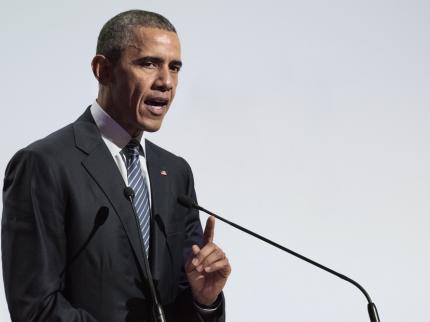
Yesterday, the Wall Street Journal reported that at the turn of the year the Obama administration discussed the initiation of talks with North Korea with the goal of formally ending the Korean War, which was only suspended by a truce, not ended with a treaty, in 1953.
According to the Journal report, the White House dropped the US’s long-standing precondition that the North would have to end its nuclear program before talks could begin. Instead, the administration said that denuclearization would simply be an agenda item in the peace negotiations. The North reportedly rejected Obama’s overture, refusing to permit its nuclear program to even be placed on the agenda. Pyongyang then detonated a nuclear device on January 6, ending the White House’s “diplomatic gambit.”
The paper’s report, if true, indicates the Obama administration was willing to execute another stunning reversal of American policy by essentially accepting the Democratic People’s Republic of Korea as a nuclear state and condoning its violations of the Nuclear Non-Proliferation Treaty.
It’s difficult to assess the White House’s diplomatic goals and strategies. On the one hand, the about-face would likely further weaken US credibility on non-proliferation as it was prepared to overlook North Korea’s secret and illegal nuclear program, essentially recognize it as a nuclear state, and reward it with peace talks.
On the other hand, the White House’s diplomacy hints of brilliance. As David Maxwell of Georgetown University points out, President Obama called Kim Jong Un’s bluff – and by doing so exposed the Kim family as needing war to justify its claims, its militarism, its abuse of its citizens, and for that matter, its existence. For decades, Kim leaders have demanded a peace treaty. When offered one, the current Kim refused to even talk about it.
Peace, in reality, is actually inimical to the Kim regime. It cannot agree to a treaty formally ending the war because such an agreement would immediately undermine its core legitimacy and its mission to unify the peninsula under its rule.
A treaty, by necessity, would mean the North accepted the existence of the South Korean state, and that is not something Kim could explain to his people. For decades, North Koreans have been asked to accept hardship to allow Kim rulers to defeat the “puppets” in Seoul.
Furthermore, Maxwell notes Pyongyang’s rebuff of the Obama administration undermines the notion that the international community can engage North Korea. The rejection of talks, as a practical matter, further isolates the North, gives the White House a freer hand to mobilize other countries, opens the door to a substantially more coercive policy, and effectively makes Beijing’s call this month for more talks with Kim seem cynical.
None of this is to say that, in the end, President Obama will deal effectively with the North Koreans, but whether by accident or design, the US now appears better positioned to counter, deter, and disarm North Korea.
OG Image: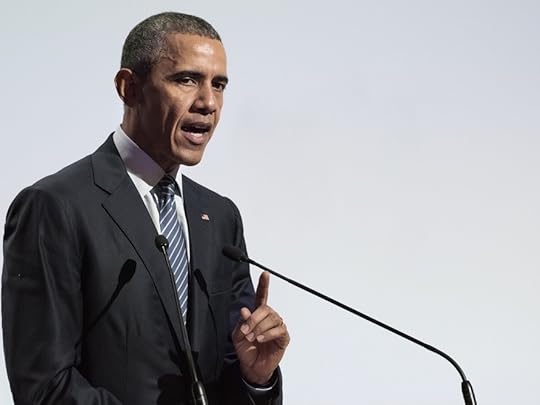 Asia PacificNorth AmericaUSKoreaNorth KoreaSouth KoreaBarack ObamaObama
Asia PacificNorth AmericaUSKoreaNorth KoreaSouth KoreaBarack ObamaObama
February 19, 2016
Could a Missile Defense Plan Turn China on North Korea?
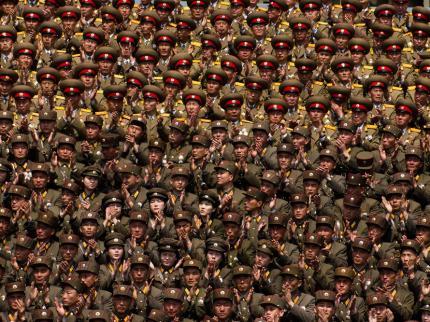
On Monday, China’s Foreign Ministry urged Washington to start direct talks with North Korea over its most destructive weapons.
“The focus of the nuclear issue on the peninsula is between the United States and North Korea,” said Hong Lei, ministry spokesman, at the daily news briefing. “We urge the United States and North Korea to sit down and have communications and negotiations, to explore ways to resolve each other’s reasonable concerns and finally reach the goal we all want reached.”
Beijing, with the urging of the Bush administration, had sponsored the so-called Six-Party Talks, which began in 2003. The concept was that progress was possible when the US and all regional stakeholders—China, Russia, Japan, and South Korea—were present in discussions with North Korea.
The White House thought that giving China a leading role would bring out the best in Beijing, which would then use its considerable leverage to “denuclearize” the Kim regime. North Korea and China are each other’s only formal ally.
Beijing, however, did not step up to the challenge, at least as Washington defined it. The Chinese used their position to play a balancing role, supporting Pyongyang as much as pressuring it.
The result, whether intentional or not, was that China gave the North Koreans the one thing they needed most to advance their weapons programs, time. After agreeing to a September 2005 statement to give up nukes, Pyongyang detonated its first atomic device in the middle of the talks, in October 2006. From there, it was only a question of time before Kim Jong Il, then the regime’s leader, would formally walk away from the Six-Party discussions. That happened in 2009.
After successive provocations—the nuclear detonation on January 6, the North’s fourth, and the February 8 test of a long-range rocket, the second successive success of a three-stage launcher—American diplomacy toward China took on a harder tone.
For example, Secretary of State John Kerry lectured the Chinese last month when, referring to the nuclear detonation, he told them that their approach to Pyongyang had not worked and that “we cannot continue business as usual.” The main purpose of Kerry’s visit to Beijing was to persuade China to increase pressure on its ally North Korea. Kerry failed.
“All nations, particularly those who seek a global leadership role or who have a global leadership role, share a fundamental responsibility to meet this challenge with a united front,” Kerry said in Beijing, obviously directing his words to a China that refused to meet American expectations.
Beijing, in response to the criticism, pushed back, taking the position that it is America’s responsibility to solve the nuclear issue, not China’s. In effect, China absolved itself of responsibility to support international efforts to curtail Pyongyang’s nuclear weapons program and essentially declared that North Korea was not its problem.
The Obama administration, however, is about to make it so. It is now persuading Seoul to accept and deploy the Terminal High Altitude Area Defense system. THAAD, stationed in China’s neighborhood, will give the US the ability shoot down North Korean missiles—and help knock down Chinese ones. Beijing summoned the South Korean ambassador over the missile-defense discussions with the US, and a senior diplomat said THAAD makes China “furious”.
Now that the South Koreans appear amenable to accepting THAAD, Beijing is beginning to reconsider its refusal to apply pressure on Pyongyang. Although China is still trying to deflect responsibility, American policymakers may have found the key to bringing Beijing around.
OG Image: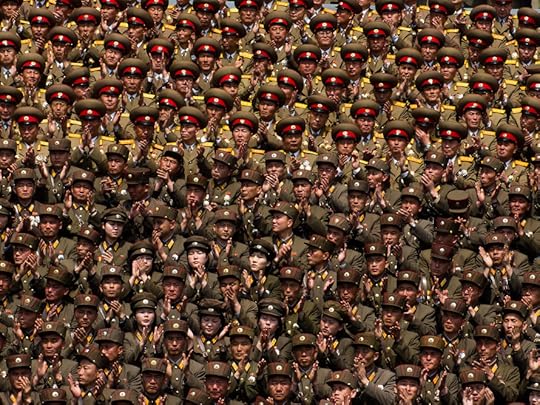 Asia PacificChinaKoreaNorth KoreaUS
Asia PacificChinaKoreaNorth KoreaUS
Gordon G. Chang's Blog
- Gordon G. Chang's profile
- 52 followers



